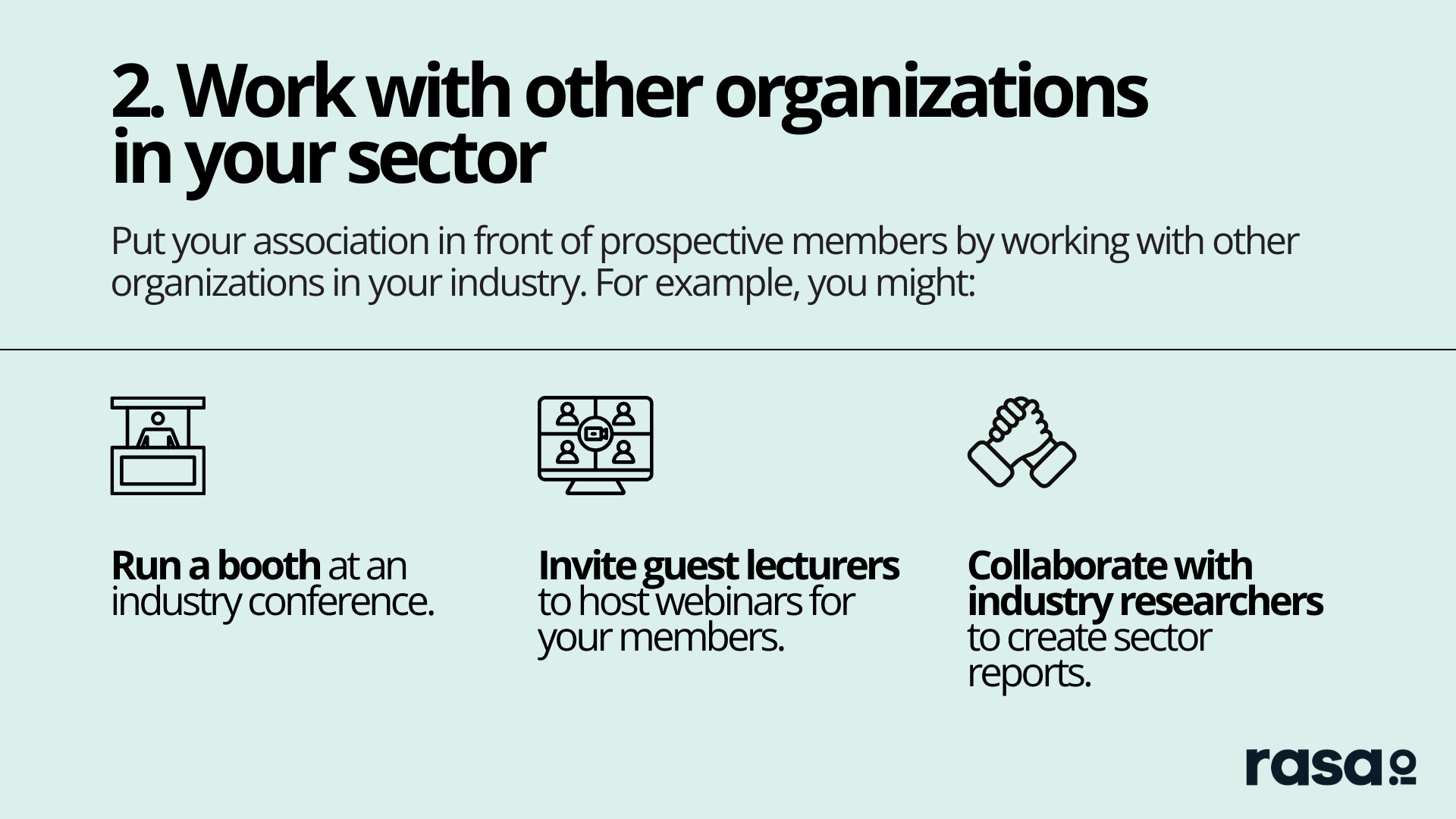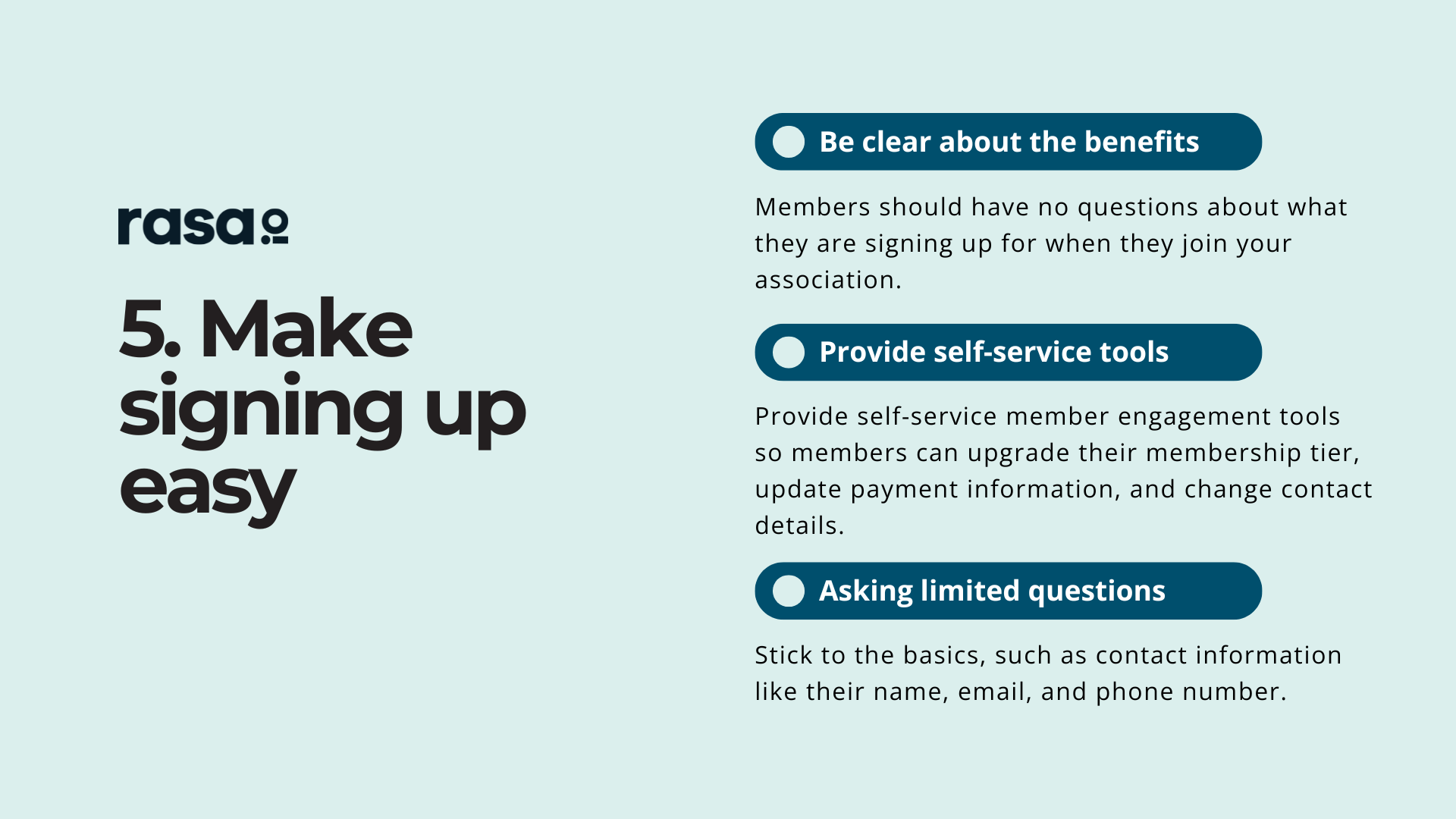1. Create a dedicated member recruitment email cadence.
For example, you might collect non-members’ emails through:
- Event registrations. If you host events that are open to both your members and the general public, use them as recruitment opportunities. For example, you might send non-members information about your next event as well as a sample newsletter to show off your association’s other benefits.
- Newsletter subscriptions. Your newsletter is a key opportunity to showcase what your association has to offer. Highlight new content, updates at your association, and any recent accomplishments. An email newsletter should provide both an overview of current happenings at your association and calls to action to get involved, ensuring current members stay informed and prospective members make the jump to join your association.
- Free memberships. Some associations have a free membership tier where supporters receive limited benefits, such as access to your newsletter. The goal of a free membership tier is to provide a sampling of your offerings to entice these individuals to upgrade to a paid membership.
No matter how you gathered a prospective member’s email, be sure to deliver the content they signed up for and your recruitment messages.
For example, you should send out your monthly newsletter to all subscribers, but you might also flag non-members who are subscribed and send them a welcome email introducing your association. You would then follow up with an email highlighting new and popular content. Finally, you might present an opportunity to join your association at a reduced rate for their first month of membership.
2. Work with other organizations in your sector.
- Run a booth at an industry conference.
- Invite guest lecturers to host webinars for your members.
- Collaborate with industry researchers to create sector reports.
3. Promote a variety of content.
As such, assess your content strategy and decide what should be shared with general audiences. For instance, you might pick recent blog articles with search engine optimization (SEO) potential that could become highly discoverable. Nexus Marketing’s guide to SEO for associations recommends using search engines to promote the following types of content:
- Certifications and training products
- Memberships
- Tools and resources, like educational content
- Recurring events
4. Consider an “open-door” membership model.
5. Make signing up easy.
Marketing your association to new members can be challenging, so ensure when you do finally push prospective members to your sign-up page, joining is as simple as possible.
You can create a positive sign-up experience and encourage more individuals to join your association by:
- Being clear about benefits. Members should have no questions about what they are signing up for when they join your association. If you have multiple membership tiers, ensure your sign-up page clearly labels which benefits are part of each membership package.
- Providing self-service tools. In the event that a member makes a mistake or wants to change a detail about their membership, they should be able to do so easily. Leverage association management software with self-service member engagement tools so members can upgrade their membership tier, update payment information, and change contact details.
- Asking limited questions upfront. You will need to collect a significant amount of information on your members to create positive experiences for them, but when members first sign up, stick to the basics, such as their name and contact information. Tradewing’s guide to membership directories shares how associations can gather detailed information during the member profile creation process, which can occur later as part of the onboarding experience.
Drive sign-ups by issuing calls to action across external materials. For example, on your website’s homepage, you should have a clearly labeled “join” or “sign up” button. Ensure your sign-up page contains basic details about your association so if members reach it via a link from your email newsletter or social media account, they have proper context for what your organization does without needing to browse your site.

















